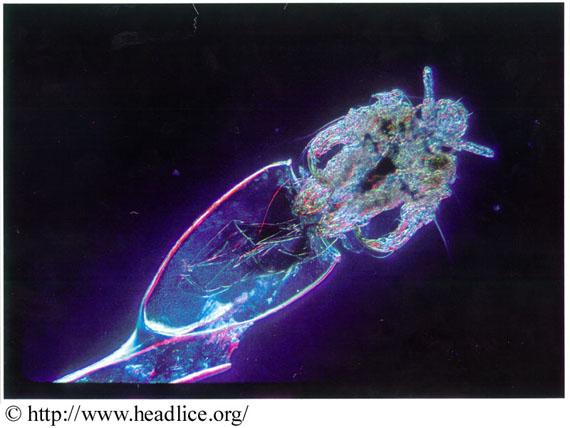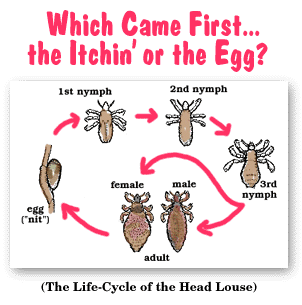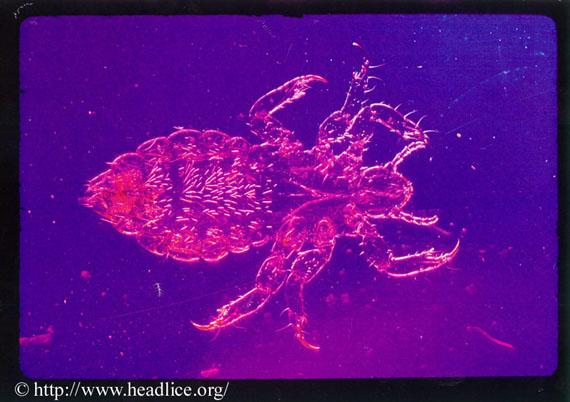|
|
|
|
|
|
Eggs or nits (that look like tiny white or tan dots) are usually laid by the female close to the base of the hair near the scalp and they are firmly stuck to the hair. The eggs (and the empty shell) are known as nits and are always oval. They are usually tan when alive and pearly or grayish white in colour after dying.

A head louse hatching from the egg case, seen through a microscope
Just before hatching the eyes and other
structures of the embryo can be seen through the translucent
shell. On hatching, the top of the egg opens like a lid.
Live nits may be found anywhere on the hair shaft, but
normally they are found near the scalp and they are
"super-glued" on and do not flake off like dandruff. They
are so hard to remove we invented the term "nitpicking" to
describe the difficulty! One louse can lay 150 nits a month
(normal lifetime). They hatch in about 10 days. They can
survive under water for over 24 hours. There are three nymphal stages, all of
which look like the adult except in size and possession of
sexual organs, but they do have some change in colour,
getting darker as they get older.

The nymphs and adults feed by pressing the front of their heads against the skin of their human; a series of curved teeth around their mouths then fasten on to the skin. Saliva from the salivary glands lubricates the teeth and they begin to feed on you.
Length of life cycle
The egg hatches within 8 - 9 days and the nymphal stages take approximately the same length of time. The life cycle takes place, therefore, every 18 days. The length of the adult stage in the male is about 10 days and in the female can vary from 9 - 22 days. A maximum of about 6 to 10 nits/eggs are laid each day by each female. All lice feed on blood every 3 - 6 hours and can only survive about 20 - 48 hours without a blood meal. Nits are the size of the fullstop at the end of this sentence.

Adult head lice are gray and about the size of a sesame seed. They often have a tiny dot on their backs. They live only on human hair and scalps. Hatching occurs about one week after attachment. Since lice go through a gradual/simple metamorphosis, the tiny nymphs look like adults. They grow to maturity in about 10 days. Adult lice mate and the female can lay about 50-150 eggs before she dies.